List Of Educational Theorists
-
Jean Piaget: Cognitive Development Theory
-
Lev Vygotsky: Social Development Theory
-
Erik Erikson: Psychosocial Development Theory
-
Maria Montessori: Montessori Method
-
John Dewey: Experiential Learning
-
Howard Gardner: Multiple Intelligences Theory
-
Loris Malaguzzi: Reggio Emilia Approach
Key Concepts and Principles Of Educational Theorists
Jean Piaget: Cognitive Development Theory
-
Stages of Development: Sensorimotor, Preoperational, Concrete Operational, Formal Operational.
-
Key Concepts: Schemas, assimilation, accommodation, and equilibration.
-
Focus: How children construct knowledge and understanding through interaction with their environment.
Lev Vygotsky: Social Development Theory
-
Key Concept: Zone of Proximal Development (ZPD) – the difference between what a learner can do without help and what they can achieve with guidance.
-
Importance of Social Interaction: Learning is a social process, and cognitive development is largely a result of social interactions.
-
Scaffolding: Supportive framework provided by more knowledgeable others to help learners achieve tasks within their ZPD.
Erik Erikson: Psychosocial Development Theory
-
Eight Stages of Development: Trust vs. Mistrust, Autonomy vs. Shame, Initiative vs. Guilt, Industry vs. Inferiority, Identity vs. Role Confusion, Intimacy vs. Isolation, Generativity vs. Stagnation, Integrity vs. Despair.
-
Focus: Each stage involves a psychosocial crisis that must be resolved for healthy psychological development.
Maria Montessori: Montessori Method
-
Child-Centered Learning: Emphasizes independence, freedom within limits, and respect for a child’s natural psychological development.
-
Prepared Environment: Classrooms are designed to facilitate independent learning and exploration.
-
Sensitive Periods: Times when a child is particularly receptive to learning certain skills or knowledge.
John Dewey: Experiential Learning
-
Learning by Doing: Education should be based on the principle of learning through experience.
-
Democracy and Education: Schools should be communities that reflect democratic principles and prepare students for active citizenship.
-
Problem-Based Learning: Encourages critical thinking and problem-solving through real-world experiences.
Howard Gardner: Multiple Intelligences Theory
-
Eight Intelligences: Linguistic, Logical-Mathematical, Spatial, Musical, Bodily-Kinesthetic, Interpersonal, Intrapersonal, Naturalistic.
-
Key Concept: Intelligence is not a single entity but a combination of multiple cognitive abilities.
-
Focus: Education should address and develop all types of intelligences.
Loris Malaguzzi: Reggio Emilia Approach
-
Image of the Child: Children are viewed as capable, competent, and active participants in their own learning.
-
The Hundred Languages of Children: Recognition of the many ways children express their thoughts and creativity.
-
Project-Based Learning: Emphasizes exploration and investigation through projects that are child-initiated and teacher-facilitated.
Steps to Incorporate Theorists
-
Understand the Theories: Familiarize yourself with the key concepts and principles of the educational theorists. Understanding their theories will enable you to make meaningful connections with your observations.
-
Observe and Document: When documenting observations, consider how the child's behavior and development align with specific theories. For example, if a child is engaging in pretend play, you might reference Piaget’s stages of cognitive development or Vygotsky’s concept of imaginative play.
-
Link Observations to Theories:
-
Observation: Describe what the child did. Include details about the context, interactions, and activities.
-
Theoretical Link: Explain how the observation relates to a specific theory. Mention the theorist and the relevant concept.
-
Example: “During free play, Emma built a tower with blocks and then pretended it was a castle. This behavior aligns with Piaget’s preoperational stage, where children engage in symbolic play and begin to use objects to represent other things.”
-
-
Reflect on Practice: Reflect on how understanding these theories influences your teaching practices. Document how you use these insights to support children’s learning and development.
-
Example: “Understanding Vygotsky’s concept of the Zone of Proximal Development, I provided just enough support to help Ethan solve the puzzle on his own, fostering his problem-solving skills.”
-
-
Plan Next Steps: Use the theoretical insights to inform your planning and teaching strategies. Document how you plan to extend the child’s learning based on the theories.
-
Example: “To further support Maria’s development, I will introduce more complex puzzles that challenge her problem-solving abilities, aligning with Vygotsky’s theory of scaffolding.”
-
Practical Examples
-
Piaget’s Cognitive Development:
-
Observation: “Liam grouped objects by color and size during play.”
-
Link: “This behavior demonstrates Piaget’s concrete operational stage, where children begin to classify and organize objects.”
-
-
Vygotsky’s Social Development:
-
Observation: “Sara and James worked together to build a fort.”
-
Link: “Their collaboration reflects Vygotsky’s theory of social learning, emphasizing the importance of social interaction in cognitive development.”
-
-
Gardner’s Multiple Intelligences:
-
Observation: “Lucas displayed exceptional musical ability, creating rhythms with instruments.”
-
Link: “According to Gardner’s theory of multiple intelligences, Lucas demonstrates strong musical intelligence.”
-
Documentation Tips
-
Be Specific: Clearly describe the child’s actions and link them to specific concepts from the theorists.
-
Use Quotes: Include direct quotes from the children when possible, as it provides authentic insight into their thinking.
-
Visuals: Incorporate photos or drawings to complement your written observations and make the documentation more engaging.
-
Regular Updates: Continuously update your documentation to reflect the child’s ongoing development and how it aligns with various theories.
Examples Of How To Incorporate Theorists Into Early Childhood Documentation
Here are some examples of how you can incorporate the theories and principles of various educational theorists into early childhood documentation:
Jean Piaget: Cognitive Development Theory
-
Observation: Document a child's use of schemas, such as repeatedly stacking and unstacking blocks.
-
Assessment: Note a child's stage of development, like being in the preoperational stage, through their ability to use symbolic play.
- Reflection: Highlight moments of assimilation and accommodation, such as adjusting their understanding of balance while playing on a seesaw.
Lev Vygotsky: Social Development Theory
-
Observation: Record instances of peer collaboration and guided play, showing how children learn from each other.
-
Assessment: Identify activities within the child's Zone of Proximal Development (ZPD) and note the scaffolding provided by educators.
-
Reflection: Reflect on the effectiveness of social interactions in promoting learning and adjust strategies accordingly.
Erik Erikson: Psychosocial Development Theory
-
Observation: Document a child's initiative in trying new activities and how they cope with success or failure.
-
Assessment: Monitor the child's progress through psychosocial stages, like industry vs. inferiority, by observing their involvement in group projects.
-
Reflection: Consider the child's sense of trust, autonomy, and identity in planning future activities and interactions.
Maria Montessori: Montessori Method
-
Observation: Record a child's independent activities and choices in a prepared environment.
-
Assessment: Note the child's progress during sensitive periods, such as language development, by documenting their engagement with related materials.
-
Reflection: Reflect on the child's growth in independence and self-regulation and how the environment supports these qualities.
John Dewey: Experiential Learning
-
Observation: Document a child's involvement in hands-on, experiential activities, like a science experiment.
-
Assessment: Assess the child's problem-solving and critical-thinking skills through their participation in real-world tasks.
-
Reflection: Reflect on the effectiveness of experiential learning in fostering curiosity and active participation.
Howard Gardner: Multiple Intelligences Theory
-
Observation: Record a child's activities that demonstrate different types of intelligence, such as musical, spatial, or bodily-kinesthetic.
-
Assessment: Identify and document the child's strengths across multiple intelligences and tailor learning experiences to these strengths.
-
Reflection: Reflect on the diversity of intelligences in the classroom and plan inclusive activities that cater to all types.
Loris Malaguzzi: Reggio Emilia Approach
-
Observation: Document the child's exploration and expression through various "languages," such as drawing, storytelling, and building.
-
Assessment: Note the child's involvement in project-based learning and the depth of their investigation.
-
Reflection: Reflect on the child's active participation and how the environment and documentation support their learning journey.
Importance Of Incorporating Theorists
Foundation of Best Practices
-
Evidence-Based Practices: Theories provide a research-based foundation for understanding how children learn and develop. This ensures that your teaching practices are grounded in proven methods.
-
Informed Decision-Making: Understanding various theories allows educators to make informed decisions about curriculum design, teaching strategies, and interventions.
Enhanced Teaching Effectiveness
-
Guidance for Instruction: Theories offer insights into effective teaching methods and approaches. For example, Piaget’s theory of cognitive development informs the use of hands-on, experiential learning activities.
-
Tailored Teaching: Knowledge of developmental stages and individual differences helps educators tailor their teaching to meet the diverse needs of children.
Professional Growth
-
Continuous Learning: Engaging with theories encourages continuous professional development and a deeper understanding of the field.
-
Reflection and Improvement: Reflecting on how theoretical concepts apply to your practice can lead to continuous improvement and adaptation of teaching methods.
Communication and Collaboration
-
Common Language: Theories provide a common language for educators to discuss child development and educational practices, facilitating collaboration and consistency.
-
Parent Engagement: Explaining the theoretical basis for your practices can help parents understand and support their child’s learning and development.
Holistic Approach
-
Whole Child Development: Theories emphasize the importance of addressing all aspects of a child’s development, including cognitive, social, emotional, and physical growth.
-
Cultural Sensitivity: Some theories, like Vygotsky’s, emphasize the role of culture and social interactions in learning, promoting a culturally responsive approach.
Adaptability and Flexibility
-
Informed Adaptations: Theories provide a framework for adapting teaching practices to different contexts and individual needs.
-
Responsive Teaching: Educators can respond more effectively to children’s needs and interests by understanding how they learn and develop.
Validation of Practices
-
Credibility: Aligning your practices with established theories adds credibility to your approach and demonstrates a commitment to high-quality education.
-
Accountability: Theories provide a benchmark for evaluating the effectiveness of educational practices and interventions.
Linking Theories To The EYLF
Linking educational theories to the Early Years Learning Framework (EYLF) can help educators create a more holistic and effective learning environment for children. Here's how some key theorists align with the EYLF outcomes:
EYLF Outcome 1: Children have a strong sense of identity
-
Jean Piaget: Emphasizes the importance of children's active exploration and understanding of themselves through play and interaction.
-
Erik Erikson: Focuses on the development of a strong sense of identity through resolving psychosocial crises at each stage of development.
EYLF Outcome 2: Children are connected with and contribute to their world
-
Lev Vygotsky: Highlights the role of social interactions and cultural tools in children's learning and development.
-
Jean-Jacques Rousseau: Advocates for children's connection to nature and their environment as a means of developing character and moral sense.
EYLF Outcome 3: Children have a strong sense of wellbeing
-
Friedrich Froebel: Emphasizes the importance of free self-expression, creativity, and motor expression in promoting children's wellbeing.
-
Maria Montessori: Focuses on creating a prepared environment that supports children's independence and self-regulation.
EYLF Outcome 4: Children are confident and involved learners
-
Maria Montessori: Encourages independence, observation, and following the child's interests to foster confident and involved learning.
-
John Dewey: Promotes experiential learning and problem-solving through hands-on activities and real-world experiences.
EYLF Outcome 5: Children are effective communicators
-
Lev Vygotsky: Emphasizes the importance of language and social interactions in children's cognitive development and communication skills.
-
Friedrich Froebel: Focuses on the use of play and creative expression as means of communication and learning.
By integrating these theories into the EYLF, educators can create a rich and supportive learning environment that addresses the diverse needs and strengths of each child. This approach helps children develop a strong sense of identity, connect with their world, maintain wellbeing, become confident learners, and communicate effectively.
Further Reading
Child Theorists and Their Theories in Practice
Guide To The Reggio Emilia Approach
Learning Styles According To Howard Gardner
Piaget's Symbolic Play
John Dewey's Theory
Stages Of Play
Howard Gardner - Multiple Intelligence
Erikson - Psychosocial Development
Jean Piaget - Cognitive Development







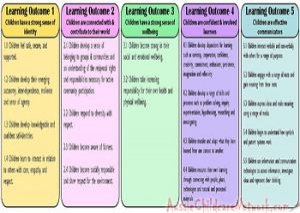 Here is the list of the EYLF Learning Outcomes that you can use as a guide or reference for your documentation and planning. The EYLF
Here is the list of the EYLF Learning Outcomes that you can use as a guide or reference for your documentation and planning. The EYLF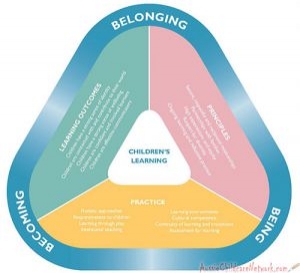 The EYLF is a guide which consists of Principles, Practices and 5 main Learning Outcomes along with each of their sub outcomes, based on identity,
The EYLF is a guide which consists of Principles, Practices and 5 main Learning Outcomes along with each of their sub outcomes, based on identity, This is a guide on How to Write a Learning Story. It provides information on What Is A Learning Story, Writing A Learning Story, Sample
This is a guide on How to Write a Learning Story. It provides information on What Is A Learning Story, Writing A Learning Story, Sample One of the most important types of documentation methods that educators needs to be familiar with are “observations”. Observations are crucial for all early childhood
One of the most important types of documentation methods that educators needs to be familiar with are “observations”. Observations are crucial for all early childhood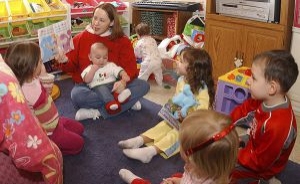 To support children achieve learning outcomes from the EYLF Framework, the following list gives educators examples of how to promote children's learning in each individual
To support children achieve learning outcomes from the EYLF Framework, the following list gives educators examples of how to promote children's learning in each individual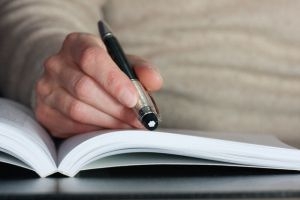 Reflective practice is learning from everyday situations and issues and concerns that arise which form part of our daily routine while working in an early
Reflective practice is learning from everyday situations and issues and concerns that arise which form part of our daily routine while working in an early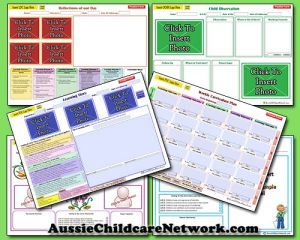 Within Australia, Programming and Planning is reflected and supported by the Early Years Learning Framework. Educators within early childhood settings, use the EYLF to guide
Within Australia, Programming and Planning is reflected and supported by the Early Years Learning Framework. Educators within early childhood settings, use the EYLF to guide When observing children, it's important that we use a range of different observation methods from running records, learning stories to photographs and work samples. Using
When observing children, it's important that we use a range of different observation methods from running records, learning stories to photographs and work samples. Using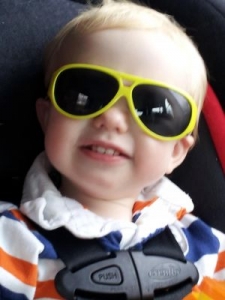 This is a guide for educators on what to observe under each sub learning outcome from the EYLF Framework, when a child is engaged in
This is a guide for educators on what to observe under each sub learning outcome from the EYLF Framework, when a child is engaged in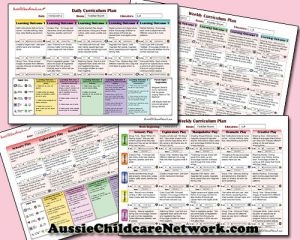 The Early Years Learning Framework describes the curriculum as “all the interactions, experiences, activities, routines and events, planned and unplanned, that occur in an environment
The Early Years Learning Framework describes the curriculum as “all the interactions, experiences, activities, routines and events, planned and unplanned, that occur in an environment


